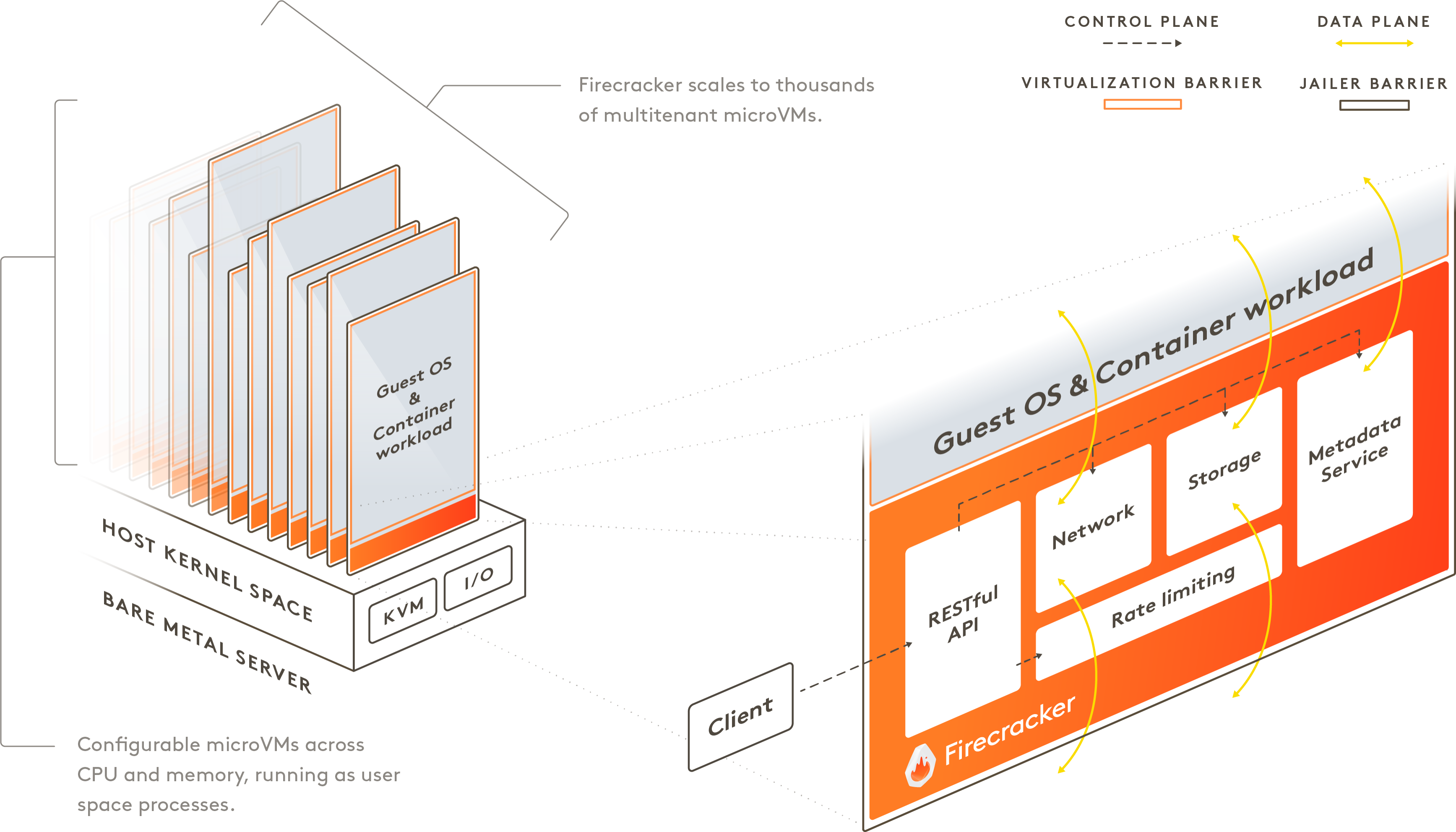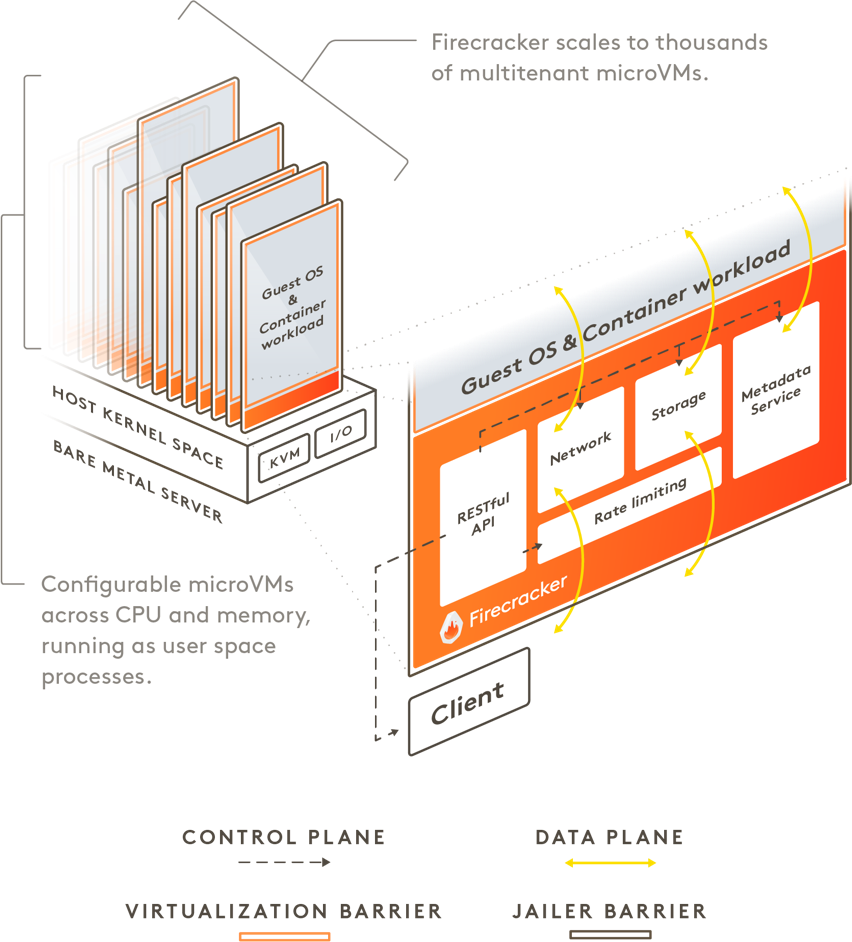Firecracker
Firecracker enables you to deploy workloads in lightweight virtual machines, called microVMs, which provide enhanced security and workload isolation over traditional VMs, while enabling the speed and resource efficiency of containers. Firecracker was developed at Amazon Web Services to improve the customer experience of services like AWS Lambda and AWS Fargate .
Firecracker is a virtual machine monitor (VMM) that uses the Linux Kernel-based Virtual Machine (KVM) to create and manage microVMs. Firecracker has a minimalist design. It excludes unnecessary devices and guest functionality to reduce the memory footprint and attack surface area of each microVM. This improves security, decreases the startup time, and increases hardware utilization. Firecracker is generally available on 64-bit Intel, AMD and Arm CPUs with support for hardware virtualization.
Firecracker is used by/integrated with (in alphabetical order): appfleet, containerd via firecracker-containerd, Fly.io, Kata Containers, Koyeb, Northflank, OpenNebula, Qovery, UniK, Weave FireKube (via Weave Ignite), webapp.io, and microvm.nix. Firecracker can run Linux and OSv guests. Our latest roadmap can be found here.
Benefits


Firecracker runs in user space and uses the Linux Kernel-based Virtual Machine (KVM) to create microVMs. The fast startup time and low memory overhead of each microVM enables you to pack thousands of microVMs onto the same machine. This means that every function, container, or container group can be encapsulated with a virtual machine barrier, enabling workloads from different customers to run on the same machine, without any tradeoffs to security or efficiency. Firecracker is an alternative to QEMU , an established VMM with a general purpose and broad feature set that allows it to host a variety of guest operating systems.
You can control the Firecracker process via a RESTful API that enables common actions such as configuring the number of vCPUs or starting the machine. It provides built-in rate limiters, which allows you to granularly control network and storage resources used by thousands of microVMs on the same machine. You can create and configure rate limiters via the Firecracker API and define flexible rate limiters that support bursts or specific bandwidth/operations limitations. Firecracker also provides a metadata service that securely shares configuration information between the host and guest operating system. You can set up and configure the metadata service using the Firecracker API. Each Firecracker microVM is further isolated with common Linux user-space security barriers by a companion program called "jailer". The jailer provides a second line of defense in case the virtualization barrier is ever compromised.
FAQs